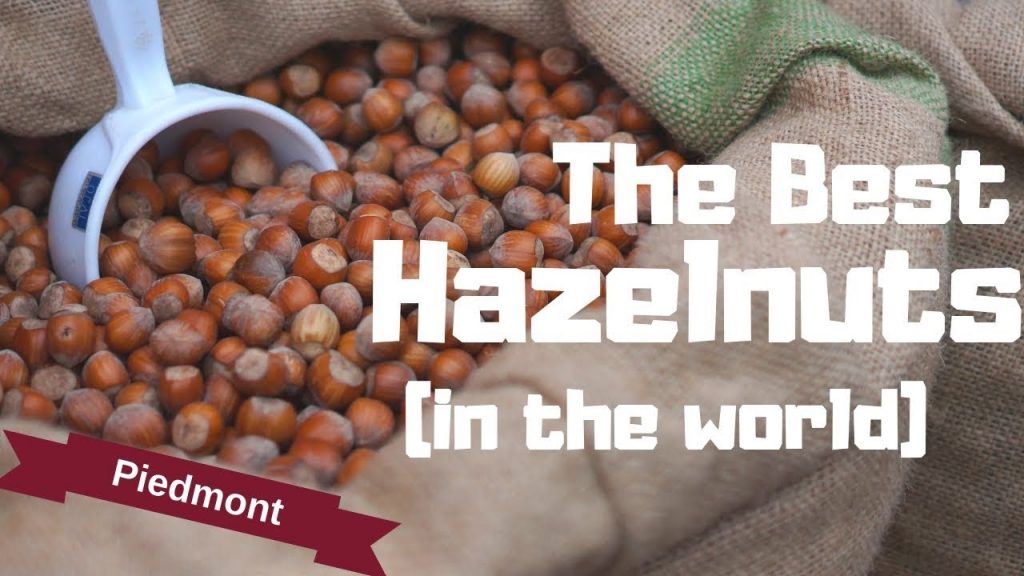Piedmont Hazelnuts: History, Characteristics and Gastronomic Delight
Piedmont, a region in Italy known for its exquisite culinary delights, is home to a treasure that has captured the hearts and palates of food enthusiasts worldwide – Piedmont Hazelnuts. These unique nuts, with their distinct characteristics, have played a crucial role in the region’s gastronomy for centuries. But what sets Piedmont Hazelnuts apart from other varieties?
How did this region become synonymous with hazelnut production? And what does the future hold for these flavorful gems? In this article, we will delve into the richness of Piedmont Hazelnuts, exploring their history, uses, cultivation, and their significance in the culinary world.
Join us on this journey as we uncover the secrets behind the beloved Piedmont Hazelnuts and understand why they are an essential ingredient in both local and international cuisine.
Introduction: Exploring the Richness of Piedmont Hazelnuts
Piedmont Hazelnuts, also known as Tonda Gentile delle Langhe, are a delightful and cherished treasure of the Piedmont region in Italy. These exquisite nuts have been a significant part of the local culture and economy for centuries, making them a symbol of pride for the region. Piedmont Hazelnuts are distinct from other types of hazelnuts due to their unique characteristics. They have a slightly elongated shape with a thin, light brown skin and a sweet, buttery flavor. These nuts are renowned for their superior quality and are often considered the finest hazelnuts in the world.
The history of Piedmont Hazelnuts is deeply rooted in the region’s agricultural heritage. The ideal climate and fertile soils of Piedmont have made it the perfect environment for hazelnut cultivation. Over time, the production of hazelnuts in Piedmont has evolved, with the region becoming synonymous with excellence in hazelnut farming. It is important to note that while hazel trees and hazelnut trees are often used interchangeably, there are slight differences in their terminology and botanical classification. Hazel trees refer to the broader category of trees in the Corylus genus, whereas hazelnut trees specifically refer to those that bear edible nuts.
The uses of hazel are diverse and extend beyond culinary applications. The wood of hazel trees is highly versatile and has been used for centuries in the construction of furniture, wattle fencing, and even musical instruments.
The Jewel of Piedmont: The Celebrated Nocciola Piemonte IGP

The hazelnut, a nut cherished worldwide for its delightful taste and texture, finds its roots in the Mediterranean Basin. Originating from the hazel tree, scientifically known as Corylus avellana L., it particularly thrives in regions graced by the Mediterranean’s unique climatic conditions. Yet, among all the hazelnuts cultivated globally, a particular variety stands a cut above the rest – the Tonda Gentile Trilobata.
Tonda Gentile Trilobata is not just any hazelnut; it’s the crown jewel of hazelnuts. Cultivated predominantly in the Langhe region of Piedmont, Italy, this variety is renowned for its perfectly round shape, its exquisitely delicate flavor, and its crisp, crunchy texture. Owing to its superior quality and regional importance, it proudly bears the name Nocciola Piemonte IGP (Indicazione Geografica Protetta, which translates to Protected Geographical Indication).
In the verdant hills of Piedmont, the cultivation of the Nocciola Piemonte IGP is more than just farming; it’s a heritage, a testament to the region’s dedication to excellence in gastronomy. Whether savored on its own, integrated into decadent chocolates, or used as a key ingredient in gourmet dishes, the Piedmont Hazelnut remains unparalleled in its class, ensuring its place as a treasured delight for generations to come. Discover all the Piedmonts gastronomic and typical dishes.
What Makes Piedmont Hazelnuts Unique: Unveiling Their Distinctive Characteristics
The Nocciola Piemonte IGP stands out in the world of confectionery, celebrated for its distinctively rounded seed, unparalleled post-roast flavor and scent, effortless peeling process, and enduring freshness. With these exceptional qualities, it’s no wonder that the Nocciola Piemonte is hailed as the pinnacle of hazelnuts globally.

Piedmont Hazelnuts, also known as Tonda Gentile delle Langhe, are renowned for their distinctive characteristics that set them apart from other types of hazelnuts. These unique features contribute to their popularity and demand in both local and international markets.
One of the key factors that make Piedmont Hazelnuts unique is their flavor profile. They have a rich, sweet, and buttery taste that is highly sought after by chefs and connoisseurs. This distinct flavor is a result of the specific soil and climate conditions found in the Piedmont region. The combination of the region’s well-drained, limestone-rich soil, and the mild, temperate climate creates the perfect environment for hazelnut cultivation, resulting in the development of their exceptional flavor.
In addition to their exceptional taste, Piedmont Hazelnuts also have a unique texture. They are known for their crispness and crunchiness, which adds a delightful element to various culinary creations. The texture of these hazelnuts is a result of their high oil content and the way they are cultivated and processed. The careful harvesting and drying techniques used in Piedmont ensure that the hazelnuts retain their desirable texture, making them ideal for both snacking and cooking. Furthermore, Piedmont Hazelnuts are distinct in terms of their size and shape. They are larger and rounder compared to other varieties of hazelnuts.
Tracing the Roots: Unearthing the History of Piedmont Hazelnuts
Piedmont Hazelnuts have a rich history that dates back centuries, making them an integral part of the region’s cultural and culinary heritage. To truly understand the significance of these hazelnuts, it is essential to delve into their origins and trace their roots.
The story begins in the picturesque region of Piedmont, located in northwest Italy. This region is blessed with the perfect climate and soil conditions for hazelnut cultivation, which has contributed to its reputation as the “Hazelnut Capital” of Italy. The history of Piedmont Hazelnuts can be traced back to ancient times when they were harvested by the Romans and enjoyed for their distinct flavor and nutritional value. Over the years, the cultivation and production of Piedmont Hazelnuts have evolved, with farmers implementing innovative techniques to ensure optimal growth and yield. The region’s unique microclimate, characterized by mild winters and hot summers, provides an ideal environment for hazelnut trees to thrive.
Piedmont Hazelnuts are known for their exceptional quality and distinctive characteristics. Unlike other types of hazelnuts, they have a slightly elongated shape and a rich, buttery flavor. This unique taste is attributed to the region’s soil composition and the specific variety of hazelnut tree cultivated in Piedmont, known as Tonda Gentile delle Langhe.
Untangling the Terminology: Understanding the Difference between Hazel and Hazelnut Trees
When discussing the topic of Piedmont Hazelnuts, it is important to understand the distinction between a hazel tree and a hazelnut tree. While the terms are often used interchangeably, there are some botanical differences to consider. Hazel trees, scientifically known as Corylus avellana, are deciduous shrubs or small trees that belong to the Betulaceae family. They are native to Europe, Asia, and North Africa. These trees are known for their distinctive catkins, which appear in late winter or early spring before the leaves emerge. Hazel trees produce both male and female flowers on the same plant, making them monoecious.
On the other hand, hazelnut trees refer specifically to the trees that produce the edible nuts we commonly know as hazelnuts or filberts. These trees are part of the hazel family but are often cultivated for their nuts rather than their ornamental value. The most common species of hazelnut tree is Corylus avellana, but there are other species such as Corylus americana and Corylus cornuta.
While the hazel tree and the hazelnut tree share similarities in terms of their appearance and characteristics, their primary distinction lies in their purpose. Hazel trees are often grown for their ornamental value, as they can add beauty to landscapes and gardens. On the other hand, hazelnut trees
Beyond the Kitchen: Discovering the Versatile Uses of Hazelnuts
While hazelnuts are most commonly associated with culinary delights, their versatility extends far beyond the kitchen. Piedmont Hazelnuts, in particular, offer a range of applications that go beyond simply adding flavor and texture to dishes. Let’s explore some of the diverse uses of hazelnuts.
1. Skincare and Beauty Products: Hazelnut oil, derived from the nuts, is known for its moisturizing and nourishing properties. It is often used as a key ingredient in skincare products such as lotions, creams, and serums. The oil’s high vitamin E content helps hydrate the skin, reduce signs of aging, and protect against environmental damage.
2. Nutritional Supplements: Hazelnuts are packed with essential nutrients, including healthy fats, fiber, vitamins, and minerals. They are often used in the production of nutritional supplements and energy bars. These products provide a convenient and nutritious way to incorporate the benefits of hazelnuts into one’s diet.
3. Confectionery and Chocolates: Hazelnuts and chocolate are a classic combination, and Piedmont Hazelnuts are particularly prized for their rich flavor. Hazelnuts are used in the production of various confectionery items, such as pralines, truffles, and chocolate spreads. Their crunchy texture and nutty taste add a delightful element to these sweet treats.
A Gastronomic Delight: Piedmont Hazelnuts’ Influence in Culinary Creations

Piedmont Hazelnuts have long been recognized as a gastronomic delight, playing a significant role in culinary creations both locally in Piedmont and around the world. Their unique flavor and aroma make them a prized ingredient in various dishes, desserts, and confections.
One of the most iconic uses of Piedmont Hazelnuts is in the famous Italian delicacy, Nutella. This creamy hazelnut spread has gained worldwide popularity and is enjoyed by millions. The rich and nutty flavor of Piedmont Hazelnuts adds a distinct taste to Nutella, making it an irresistible treat. In addition to Nutella, Piedmont Hazelnuts are also widely used in traditional Piedmontese cuisine. They are a key ingredient in desserts such as hazelnut cakes, pastries, and gelato. The nuts can be ground into a fine powder and used as a coating for chocolates or as a topping for ice cream.
Piedmont Hazelnuts are not only limited to sweet dishes; they also add depth and complexity to savory recipes. They are often used in pesto sauces, adding a nutty flavor that perfectly complements the freshness of basil and the sharpness of Parmesan cheese. The hazelnuts can also be roasted and chopped to enhance the texture and taste of salads, risottos, and roasted vegetables.
Cultivation Chronicles: Insights into Growing and Harvesting Piedmont Hazelnuts
Piedmont Hazelnuts have gained international recognition for their superior quality and unique flavor. The cultivation of these prized nuts requires specialized knowledge and attention to detail. In this section, we will delve into the fascinating world of growing and harvesting Piedmont Hazelnuts, providing insights into the techniques and practices employed by farmers in the region.
The first step in cultivating Piedmont Hazelnuts is selecting the right variety of hazelnut tree. The most common variety grown in Piedmont is the Tonda Gentile delle Langhe. These trees thrive in the region’s favorable climate, which is characterized by mild winters and warm summers. The Tonda Gentile delle Langhe variety is known for its excellent nut quality, making it the preferred choice for farmers.
Planting hazelnut trees typically takes place in the spring when the soil is moist and temperatures are mild. The trees are planted in rows, with adequate spacing to ensure proper growth and development. It is important to choose a location with well-drained soil and good exposure to sunlight.
Hazelnut trees require consistent care and maintenance throughout their lifespan. Regular pruning is necessary to shape the tree and promote optimal nut production. Pruning also helps to improve air circulation and prevent the spread of diseases. Farmers closely monitor the trees for any signs of pests or diseases, taking appropriate measures to protect their crop.
Embracing the Future: Factors Shaping the Future of Piedmont Hazelnut Production
Piedmont Hazelnuts have a rich history and play a significant role in the region’s economy and culinary traditions. However, the future of their production is not without challenges. Several factors are shaping the future of Piedmont Hazelnut production, and it is important to understand these factors to ensure the continued success and sustainability of this industry.
1. Climate Change: One of the most pressing concerns for hazelnut production in Piedmont is the impact of climate change. Hazelnut trees require specific temperature ranges and climates to thrive, and any significant shifts in these conditions can have detrimental effects on their growth and productivity. Rising temperatures, changing rainfall patterns, and increased frequency of extreme weather events pose a threat to the stability of hazelnut orchards. Farmers and researchers are working to develop resilient hazelnut varieties that can withstand these changing conditions.
2. Market Demand: The demand for hazelnuts has been steadily increasing, driven by their popularity in both local and international markets. However, this growing demand also puts pressure on hazelnut producers to meet the supply. As the global hazelnut market expands, Piedmont Hazelnut producers need to ensure that they can scale up their production to meet the rising demand. This may require adopting more efficient farming techniques, investing in modern technology, and expanding orchards.
Concluding Thoughts: Significance and Importance of Piedmont Hazelnuts
Piedmont Hazelnuts hold significant importance, both culturally and economically, in the region of Piedmont. These unique hazelnuts have distinct characteristics that set them apart from other types of hazelnuts, making them highly sought after in various industries, particularly in gastronomy. Piedmont Hazelnuts have a rich history in the region, with Piedmont becoming renowned for its hazelnut production over time. The favorable climate and soil conditions in Piedmont have contributed to the growth and development of these hazelnuts, resulting in their exceptional quality and flavor. The cultivation and harvesting techniques have evolved over the years, ensuring that Piedmont continues to produce top-quality hazelnuts.
It is important to note that a hazel tree and a hazelnut tree are not the same. While both are part of the same botanical family, there are slight differences between the two. A hazel tree refers to any tree in the Corylus genus, while a hazelnut tree specifically refers to trees that produce edible hazelnuts.
The uses of hazel are diverse and extensive. In addition to their culinary applications, hazel has been utilized for medicinal purposes, thanks to its various health benefits. The wood from hazel trees is also highly valued in the production of furniture, tools, and other industrial products.
In conclusion
Piedmont Hazelnuts hold a significant place in the region’s history, culture, and economy. Their unique characteristics and versatile uses have made them highly sought after in gastronomy, medicine, and industry. The cultivation and harvesting of Piedmont Hazelnuts require careful attention and expertise, and the future of their production is influenced by various factors, including climate change and market trends.
Understanding the importance of Piedmont Hazelnuts and their cultivation is crucial for preserving and promoting this valuable resource. Whether you are a food enthusiast, a farmer, or a consumer, exploring the richness of Piedmont Hazelnuts is a journey worth embarking on.
Visit hazelnut farms in Piedmont and savor the flavor of these exquisite nuts, or support local producers by purchasing Piedmont Hazelnuts. By doing so, you contribute to the preservation of this unique and cherished tradition.
Sources: https://www.nocciolapiemonte.it/





